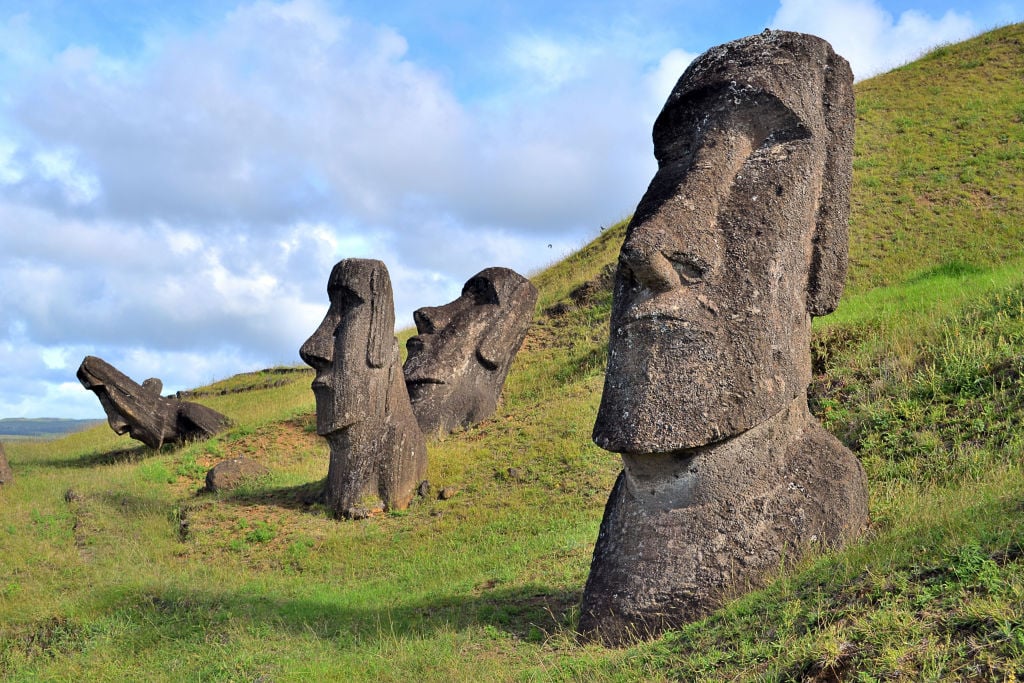Archaeology & History
Archaeologists on Easter Island Have Discovered a Previously Unknown Moai Statue Buried in a Dried-Out Lake Bed
More of the iconic head statues could turn up, researchers say.

More of the iconic head statues could turn up, researchers say.

Jo Lawson-Tancred

A new moai statue has been found on Rapa Nui, a Chilean territory also known as Easter Island, prompting excitement among researchers that there may yet be others waiting to be discovered.
The sacred monument, which is smaller than most others on the island, was found buried in a dry lake bed. This area is not usually accessible to humans but had dried out most likely due to climate-related weather conditions, allowing archaeologists to attempt an excavation.
“For the Rapa Nui people, it’s [a] very, very important discovery,” Salvador Atan Hito, vice president of the Indigenous organization Ma’u Henua, which oversees the site, told Good Morning America. “Because it’s here in the lake and nobody knows this exists — even the ancestors, our grandparents, don’t know [about] that one.”
Terry Hunt, a professor of archaeology at the University of Arizona who specializes in the Rapa Nui, added, “we think we know all the moai, but then a new one turns up. There have been no moai found in the dry bed or in what was previously a lake, so this is a first.”
The archaeologists are currently on a mission to see what else they can unearth at the site, looking out for evidence of moai as well as the tools that might have been used to make them.
“They’ve been hidden by the tall reeds that grow in the lake bed and prospecting with something that can detect what’s under the ground surface may tell us that there are in fact more moai in the lakebed sediments,” explained Hunt. “When there’s one moai in the lake, there’s probably more.”
There are approximately 1,000 moai on Easter Island. These monolithic human figures were carved out of volcanic rock some 500 years ago by the Polynesian tribe Rapa Nui. They are believed to embody ancestral spirits and were placed in a ring around the island, facing inwards.
“The moai are important because they really represent the history of the Rapa Nui people. They were the islander’s deified ancestors,” said Hunt. “They’re iconic worldwide and they really represent the fantastic archeological heritage of this island.”
Many of the monuments are still being excavated and are vulnerable to damage or even attack. For example, last fall, an arsonist set fire to the island leaving some statues charred and cracked and, in 2020, another was knocked over by a runaway pickup truck. As such, there is ongoing debate over whether one sculpture, Hoa Hakananai’a, which was taken without permission by the U.K.’s Royal Navy in 1868 and is currently held by the British Museum, should be repatriated or remain in safe-keeping for now.